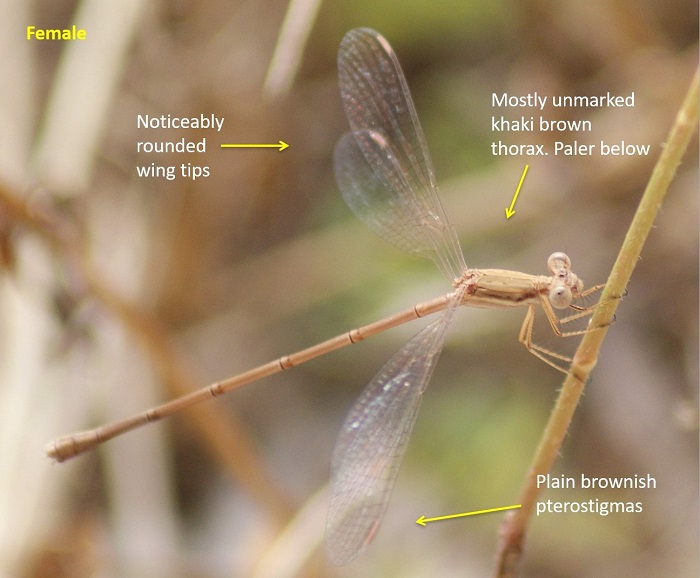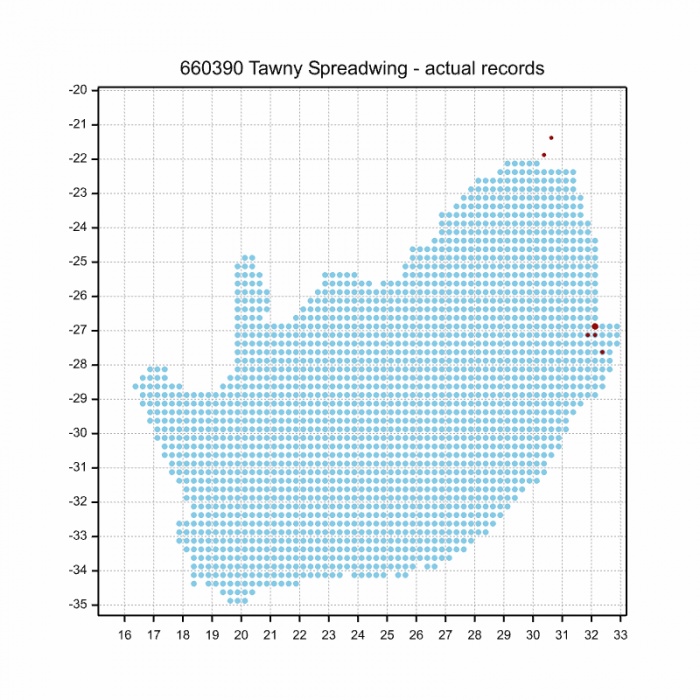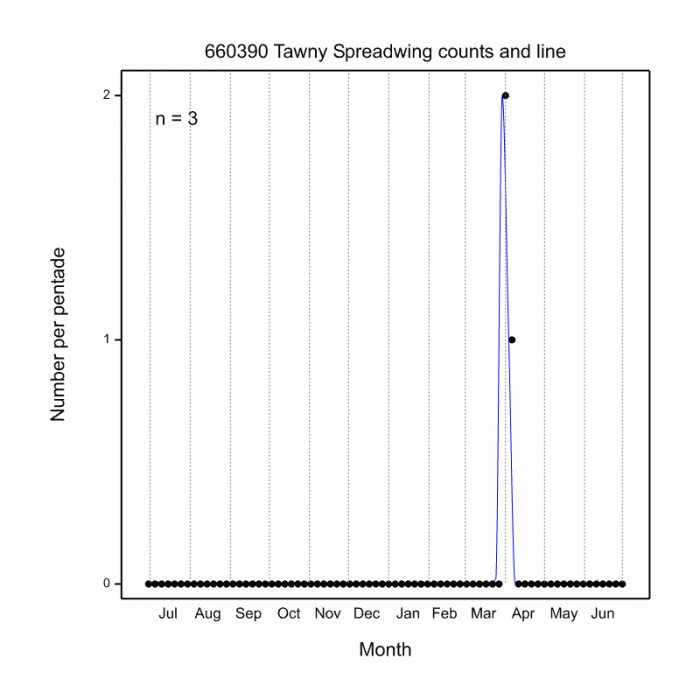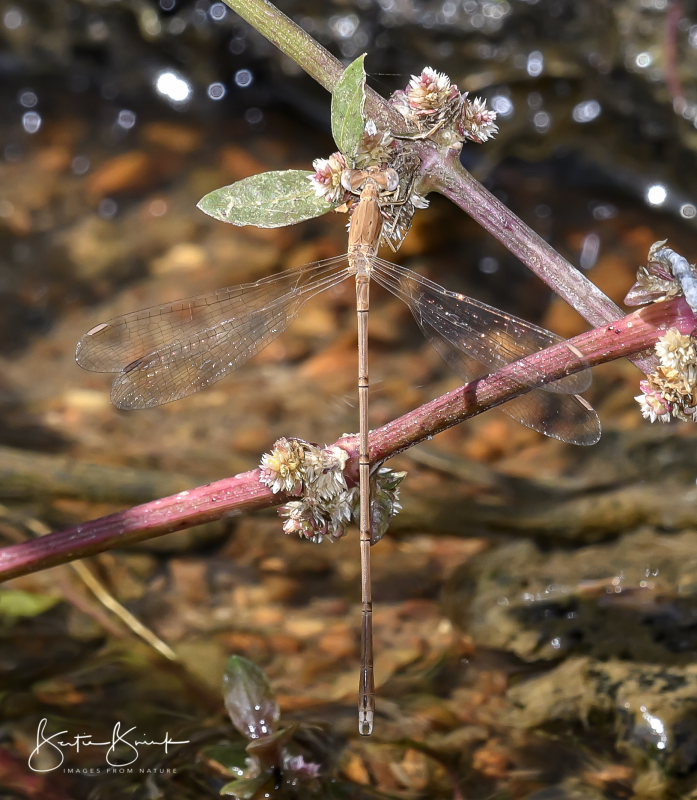View the above photo record (by Bertie Brink) in OdonataMAP here.
Find the Tawny Spreadwing in the FBIS database (Freshwater Biodiversity Information System) here.
Family Lestidae
Lestes ictericus – TAWNY SPREADWING
Identification
Small size
Length up to 38mm.
Very similar to the common pale brown form of Lestes pallidus (Pallid Spreadwing). The Tawny Spreadwing is told apart by having broad, rounded wing tips, plain brownish (not bi-coloured) pterostigmas, and in males by the differently shaped claspers that lack inner teeth.
Females closely resemble the males but lack the distinctive claspers.
Click here for more details on identification.

Photo by Norman Barrett
Habitat
A tropical savanna species. It lives near seasonal pools and pans, especially where there is shallowly flooded grass. Occupies similar habitats to Lestes pallidus but seems to prefer more humid savannas.
Behaviour
Usually found at water where it sits on grass stems with wings outstretched.
In South Africa it has been recorded during March and April. See Phenology below.
Status and Conservation
Rare in South Africa. Listed as Vulnerable in the IUCN Red List of Threatened Species.
Distribution
It is native to the wetter savanna regions of Sub-Saharan Africa. Lestes ictericus is marginal in South Africa where it is only recorded from extreme NE KwaZulu-Natal.
Below is a map showing the distribution of records for Tawny Spreadwing in the OdonataMAP database as at February 2020.

The next map below is an imputed map, produced by an interpolation algorithm, which attempts to generate a full distribution map from the partial information in the map above. This map will be improved by the submission of records to the OdonataMAP section of the Virtual Museum.


Ultimately, we will produce a series of maps for all the odonata species in the region. The current algorithm is a new algorithm. The objective is mainly to produce “smoothed” maps that could go into a field guide for odonata. This basic version of the algorithm (as mapped above) does not make use of “explanatory variables” (e.g. altitude, terrain roughness, presence of freshwater — we will be producing maps that take these variables into account soon). Currently, it only makes use of the OdonataMAP records for the species being mapped, as well as all the other records of all other species. The basic maps are “optimistic” and will generally show ranges to be larger than what they probably are.
These maps use the data in the OdonataMAP section of the Virtual Museum, and also the database assembled by the previous JRS funded project, which was led by Professor Michael Samways and Dr KD Dijkstra.
Phenology


